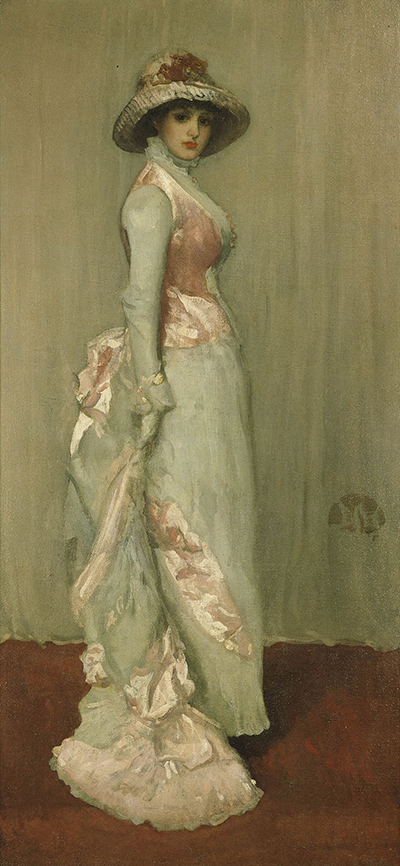The artistic work of any painter must have the inclusion of the third eye's keenness to detail for a piece to bring out the clarity of the painting's message to an audience. The addition is heightened when the artist's job is under pressure to deliver as in the case of James Abbott McNeil Whistler.
After hitting bankruptcy at the climax of his career as a portraitist in 1881, Whistler was offered a commission by Lady Meux; Valarie Susan Meux, for her full-length portraits: Arrangement in Black, No five which came to be known as Portrait of Lady Meux. Lady Meux who initially was a Victorian socialite and a banjo playing barmaid wanted to brush off her past with her elegant full-length portraits to the public by claiming to be an actress and would pose in the studio for her paintings. The Portrait of Lady Meux is a monochromatic image showing her dressed in a long black dress with a white fur coat accessorized with a diamond tiara, a diamond necklace, and a diamond bracelet.
Whistler also did another portrait for Lady Meux; Harmony in Pink and Grey. In this deceitfully modest work of art, the portraitist brought out the classy look of the lady's new found wealth and her defiant attitude after her marriage to London brewer Henry Bruce Meux. He embraced the use of opaque colors to show the image's visual rhymes with the subject’s full length with her alluded acting career before a pinkish-grey curtain. The rapid whitish- grey strokes over cool pink reflect perfectly on her trimmed haute-couture satin dress with thick frills on the train. Choosing coarse canvas for the work gives the painting a rough texture which adds emphasis to the quality.
Portrait of Lady Meux in Furs was the third painting done by Whistler before a dispute with his subject ensued which ended their relationship with the portraitist destroying the canvas painting though, its photo exists in Whistler Archives in Scotland (University of Glasgow). It was alleged that after several studio sittings with nothing but hot furs for the painting of the Portrait of Lady Meux in Furs, she criticized his efficiency and this ended their harmonious existence. Commended by the then Prince of Wales; Edward VII and Princess Alexandra in Whistler’s studio, the Portrait of Lady Meux currently hangs at Honolulu Museum of Art and together with the destroyed painting, they belong to ‘black portraits’ series of the painter’s works.




